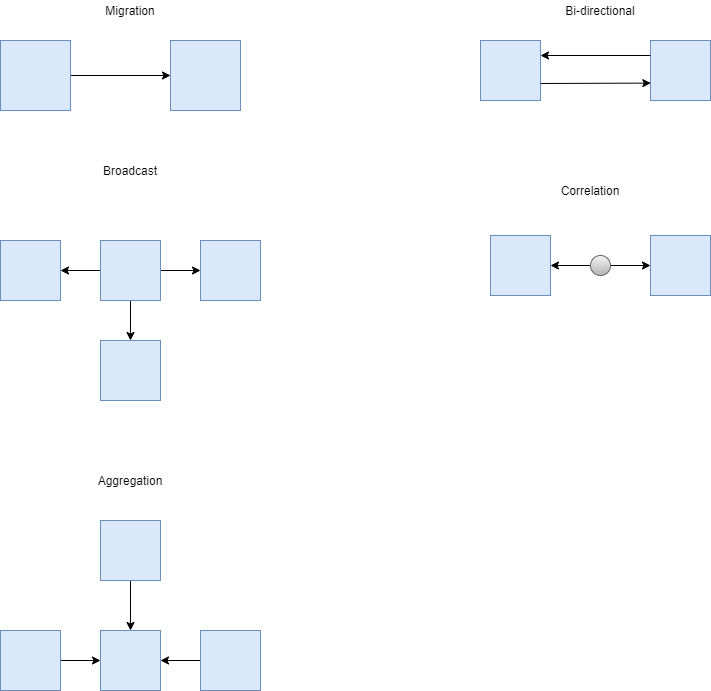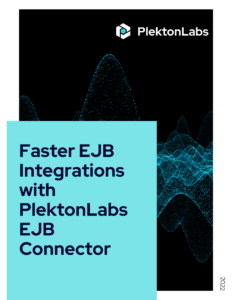Customer relationship management has been completely revamped in recent years. Salesforce can meet growing customer demands to boost sales, gain loyal customers, and improve overall marketing. It gives businesses the ability to access and use customer information to streamline business processes and create the best services. So where do Salesforce integration patterns come in?
While Salesforce is pretty much cloud-based, it would be wrong to think of it as an isolated system. Salesforce needs to be connected to other systems through integration in order for businesses to get the most out of it.
Businesses and retailers are realizing the growing importance of Salesforce integration and are connecting Salesforce to its adjacent systems. But these point-to-point integrations are inefficient, difficult to manage, and unscalable. Instead, businesses must use a Salesforce integration strategy that connects with relevant enterprise systems.
When considering the variation of Salesforce integration needs, common patterns appear. This makes it easier to address them accordingly. In other words, these patterns are the things one must do to solve a certain Salesforce integration problem, as recognized from real use cases.
Why is Salesforce Integration Necessary?
Salesforce needs to be connected to different systems for various reasons. For starters, a business may need to transfer data from a legacy system to Salesforce. Sometimes you may need to update client details or transfer huge amounts of data to or from Salesforce.
If your business is connected to Facebook or Instagram, you will need to integrate with them. Or perhaps your customer has apps behind a firewall that need to communicate with Salesforce.
Either way, some kind of integration needs to happen. What’s more, is that these integrations can turn Salesforce from a mere customer relationship management (CRM) platform into something that is useful in other areas of an organization.
The 5 Most Common Salesforce Integration Patterns

The Migration Pattern
Put simply, it involves transferring data at one point in time from one system to another. Migrations can handle large volumes of data, process multiple records in batches, and in general, have low failure cases. This makes it a good option for backups and any transfer with lots of data.
Besides, migration is vital for keeping enterprise data-agnostic from the tools that create, view, and manage it, allowing it to be used and reused by multiple systems, saving lots of time.
It allows developers to create automated migration services that create functionality to be shared across numerous teams in an organization.
The Broadcast Pattern
The broadcast pattern transfers data from a single system to multiple destination systems. This happens on a near real-time or real-time basis. Put simply, it is one-way synchronization from one to many. One-way sync usually connotes a 1:1 relationship; while the broadcast pattern creates a 1: many relationship.
Broadcast patterns keep data up-to-date between several systems over time. A broadcast Salesforce integration pattern must be super reliable to prevent losing important data in transfer. And as they often have limited human oversight and are usually initiated in mission-critical systems by push notification or are scheduled, reliability becomes even more crucial.
Moreover, it allows for the immediate transfer of customer data between systems, processing as many records as quickly as possible.
The Aggregation Pattern
An aggregation Salesforce integration pattern works as an alternative to running multiple migrations frequently. It obtains or extracts data from many systems, then usually copies or shifts it to a single system.
Need to process a lot of data from many different systems? The aggregation pattern is the easiest way to get it done without any errors or synchronization issues.
Updating Salesforce with ERP data or issue tracking systems and building APIs that collect, report, and return data from multiple systems are some real cases of using this pattern.
Using a Salesforce integration template constructed on an aggregation pattern allows users to request multiple systems when needed and merge data sets to create or store reports into the format of choice. Aggregation contains a custom logic that can be adapted to merge and format data when needed, which can be easily extended to insert data into multiple systems, such as Salesforce or Siebel.
In short, the aggregation pattern allows the extraction of data from multiple systems and merging them into one application. As a result, the data is always updated and can be processed or integrated to produce any needed dataset.
The Bi-Directional Sync Pattern
Bi-directional sync patterns integrate different datasets in multiple systems, making them act like one system. It is useful when different tools or systems are needed for purposes that need to complete different functions within the same data set.
Bi-directional sync integration results in optimized performance which maintains data integrity across both synchronized systems. It adds and removes multiple systems that subspecialize in a domain as storage. This integration pattern is best when object representations need to be comprehensive and constant.
Some uses of this pattern include: integrating Salesforce with various systems for a more optimized operation that also works as a system of record for all data.
The Correlation Pattern
This is quite similar to the bi-directional sync pattern but there is one major difference. It identifies the intersection of two data sets and performs bi-directional synchronization of that dataset. However, this only happens if the item transpires in both systems naturally.
Instead, the bi-directional synchronization will make new records if they are found in only one system. The correlation pattern cannot distinguish where the data objects come from.
This pattern is needed in cases where two different systems want to share data, but only if they both have records that corroborate the same pieces of information or certain items. For example, retail stores might want to correlate customer data across different chains and partners but want to avoid any kind of privacy violations.
In a Nutshell
Salesforce data integration and its well-documented benefits for enterprises are known across various industries. Using these patterns can revolutionize the way businesses use customer data, and use it for mutual benefit. Using them for reaching a wider customer base, or retaining loyal customers will make marketing products and services. To know which patterns will work best for you, get a consultation with integration experts to create your Salesforce Integration strategy.




